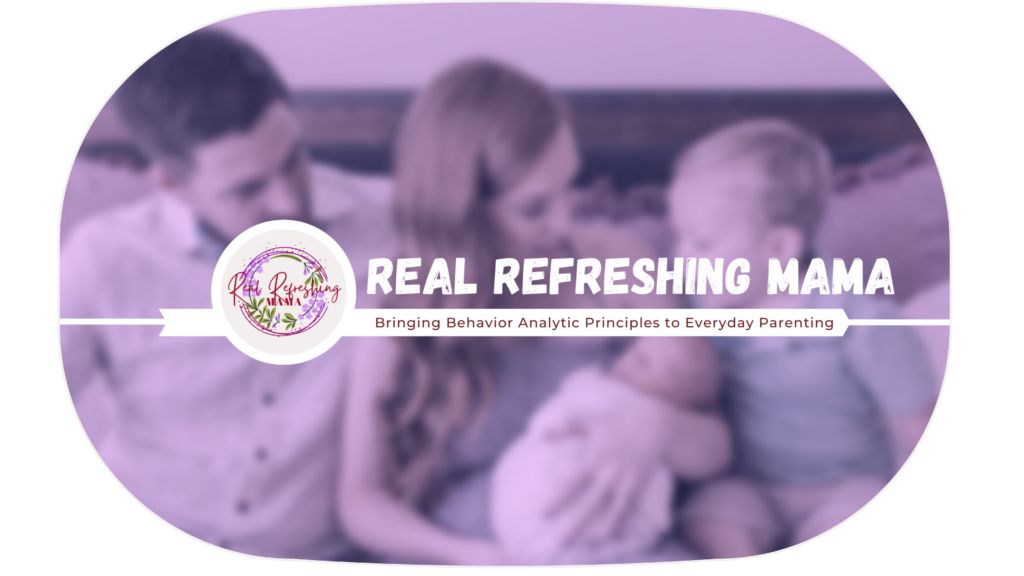Understanding age-appropriate expectations and language development for children can go a long way in supporting their progress and avoiding undue stress on both the child and the parent. In this blog post, we’ll delve into what you can typically expect in different developmental stages from infancy to pre-adolescence.
Language development is a critical part of your child’s overall development. It supports your child’s ability to communicate, express, and understand feelings. It also helps children to think, learn and develop socially. As a developmental specialist, I often reassure parents that children learn language at different rates, but there are typical milestones to help guide us. Here is a roadmap of reasonable language expectations for children at different stages.
Expressive Language Development
Talking and Communication
Infancy (0-12 months)
In their first year, children are listeners in training, absorbing language, tones, and sounds around them.
- Newborns typically respond to the sound of the human voice, especially their parents’.
- By around 6 months, babies begin to babble and mimic sounds.
- By 12 months, most babies will try to imitate words they hear and may manage simple words like “mama” or “dada.”
Toddlerhood (1-3 years)
Toddlerhood is an exciting time for language development as vocabulary rapidly expands.
- By 18 months, most children can say around 10 to 20 words. These are often nouns, like “dog” or “ball.”
- By 2 years, toddlers typically can use two-word phrases (“my ball”, “more juice”) and have a vocabulary of around 200 words.
- By 3 years, sentences become longer, and children can converse in three to four-word sentences. Vocabulary often expands to around 1,000 words, and they should be understandable to familiar adults most of the time.
Preschool Age (3-5 years)
Preschoolers enjoy talking and their language becomes more complex during this stage.
- At 4 years, children start to tell stories, can answer simple who, what, and where questions, and their sentences are longer and more complex.
- By 5 years, children can express ideas and feelings, use most grammar correctly, and understand “opposites”, like high/low or big/small. They can understand and retell a story and follow three-part instructions.
Early School Age (6-8 years)
In the early school years, children learn to use language in more sophisticated ways, both in expressing themselves and understanding others.
- They start to understand the concept of time and can use it in context, know their left from right, and can carry on detailed conversations on a wide range of topics.
- They also begin to understand humor and idioms, enjoy jokes and riddles, and can use language to hypothesize and draw conclusions.
Pre-Adolescence (9-12 years)
At this stage, children have mastered most of the basics and now language development is about enhancing and refining their skills.
- They have a more adult grasp of complex grammar and can understand figurative language.
- Pre-adolescents can engage in group discussions, use language to express abstract ideas, and understand sarcasm and irony.
Keep in mind that these are general guidelines. Each child is unique and will develop language skills at their own pace. If you have concerns about your child’s language development, it’s always a good idea to consult a pediatrician or a speech-language pathologist. Language development is a fascinating journey that varies for every child. It’s our role as parents to provide an environment full of language-rich opportunities. Engage in conversations, read together, sing songs, and narrate your day-to-day activities. These simple yet effective activities can immensely boost your child’s language skills.
Receptive Language Development
Listening and Following Directions
Children’s ability to follow directions grows as they do. Here’s a general guideline of what to expect at different ages:
Toddlers (1-3 years old):
- At this stage, children can usually follow simple, one-step instructions like “please give me the ball.” They’re beginning to understand language and can connect words with actions. However, their attention spans are limited, so it’s important to make your instructions brief and clear.
Age 1: The Foundations
- Recognition of names for familiar people, objects, and body parts.
- Understanding simple instructions, especially with visual or gestural cues (“Come here” or “Give me the ball”).
- Reacting to familiar songs, stories, or games.
- Responding to the tone of your voice (e.g., looking concerned if you sound upset).
Age 2: Expanding Understanding
- Recognizing names of familiar animals, toys, and other everyday items.
- Following simple two-step commands (“Pick up the toy and give it to me”).
- Pointing to pictures in a book when named.
- Identifying basic body parts when asked (“Where’s your nose?”).
- Starting to understand the basics of grammar in their native language (for instance, understanding the difference between “running” and “ran”).
Age 3: A Burst of Comprehension
- Understanding more complex sentences and commands.
- Recognizing the names of most familiar objects.
- Grasping basic concepts of time, like “yesterday” or “tomorrow,” even if not entirely accurately.
- Following two or three-part directions (“Get the ball, put it in the box, and bring it to me”).
- Engaging more in group activities and showing understanding through participation.
Tips for Supporting Receptive Language Development in Toddlers
- Read to Your Child: This timeless activity introduces your child to new vocabulary, complex sentence structures, and ideas.
- Engage in Conversations: Even if your child can’t respond with elaborate sentences, the act of listening and processing will help enhance their receptive skills.
- Use Gestures: Combine your words with gestures. It helps in understanding and retention.
- Play Interactive Games: Games like “Simon Says” or “Follow the Leader” can help hone a child’s ability to listen and follow directions.
- Expose Them to Varied Environments: Visiting different settings like parks, zoos, or museums can introduce new vocabulary and experiences.
Preschoolers (3-5 years old):
- Preschoolers can typically handle two-step instructions, such as “pick up your toy and put it in the box.” They also start to understand basic concepts like size, color, and position, so you can start using these in your instructions.
Age 3: Broadening Horizons
- Ability to understand more complex instructions.
- Grasping prepositions such as ‘under’, ‘on top’, ‘behind’, and ‘next to’.
- Recognition of basic colors and shapes when mentioned.
- Listening to and comprehending longer stories or series of events.
Age 4: Diving Deeper
- Comprehending abstract concepts in stories or conversations.
- Understanding the concept of ‘opposites’ (e.g., hot/cold, in/out).
- Beginning to recognize familiar signs or logos (like stop signs or store brands).
- Following multi-step directions, even without visual prompts.
Age 5: Preparing for School
- Grasping more complex sentence structures and nuanced vocabulary.
- Understanding basic time concepts like ‘yesterday’, ‘today’, and ‘tomorrow’.
- Differentiating between real and make-believe based on conversations or stories.
- Listening attentively and responding to stories, questions, and instructions in group settings, such as in a classroom.
Tips for Supporting Language Development in Preschoolers
- Interactive Storytelling: Encourage your child to ask questions or predict what happens next during story time.
- Engage in Open-ended Conversations: Ask questions that don’t have ‘yes’ or ‘no’ answers to stimulate deeper thinking and understanding.
- Introduce Varied Vocabulary: Use different words that mean the same thing and explain their similarities.
- Play Structured Games: Games that involve following directions or understanding rules can be beneficial, like board games or card games suitable for their age.
- Encourage Social Interaction: Playdates, group activities, or classes like dance, art, or sports can be an excellent way for kids to practice listening and understanding in diverse settings.
School-age children (6-9 years old):
- At this age, children can generally follow more complex instructions that involve sequencing and logic, like “After you finish your homework, please put your books away and set the table.”
Age 6: Beyond Literal Comprehension
- Ability to understand and interpret more complex sentence structures.
- Beginning to infer meaning from context and prior knowledge.
- Recognizing a broader vocabulary, including abstract nouns and more complex verbs.
- Comprehending the sequence of events in more intricate stories.
Age 7: Nuances and Details
- Identifying the main idea in stories or conversations.
- Recognizing humor, sarcasm, or non-literal language to some extent.
- Ability to follow multi-step directions in tasks that involve academic subjects like math or science.
- Grasping the concept of cause and effect in narratives.
Age 8-9: Delving into Abstract Thought
- More adept at understanding complex language structures like conditionals (if, then) or comparatives (more than, less than).
- Capable of following long and intricate sets of instructions.
- Recognizing subtleties in language, like irony or metaphors.
- Interpreting feelings and motives behind a speaker’s words, aiding in deeper social connections.
Tips for Supporting Language Development in School Age Children
- Engage in In-depth Discussions: Encourage your child to discuss books, movies, or even daily events. Dive deep into the ‘why’ and ‘how’ of situations.
- Introduce Varied Genres: Whether it’s books, shows, or games, exposing your child to various genres can enhance their ability to understand different contexts and narratives.
- Interactive Learning: Utilize educational tools and platforms that challenge their comprehension, such as puzzle-based games or science experiments.
- Encourage Social Activities: Group projects, team sports, or drama clubs can bolster receptive language by making children interpret cues and instructions in dynamic environments.
- Stay Patient and Curious: Always be ready to answer questions and clarify doubts. Encourage curiosity and celebrate their efforts to understand challenging concepts.
Pre-teens (10-12 years old):
- Pre-teens can follow multi-step instructions and understand more abstract concepts. You can give them more responsibility and expect them to follow through on tasks without constant reminders.
Age 10: Expanding Horizons
- Grasping abstract concepts and metaphors in language.
- Identifying underlying themes or moral lessons in stories.
- Understanding complex sentence structures, including passive voice and varied tenses.
- Differentiating between fact and opinion in discussions or readings.
Age 11: Nuanced Interpretations
- Recognizing irony, satire, and rhetorical questions.
- Following multi-layered instructions across various subjects.
- Inferring a speaker or author’s intent, even when not explicitly stated.
- Beginning to appreciate and understand different linguistic styles, from poetry to persuasive essays.
Age 12: Preparing for Teenage Complexity
- Developing a deeper understanding of idioms, slang, and colloquialisms.
- Comprehending advanced academic texts across subjects, from science to literature.
- Recognizing the nuances of tone, pitch, and emphasis and how they can change meaning.
- Predicting and evaluating outcomes based on information presented, signaling a merger of receptive language with critical thinking.
Tips for Supporting Receptive Language Development in Pre-Teens
- Promote Diverse Reading: Introduce them to various genres, authors, and cultures. This expands vocabulary and comprehension skills.
- Engage in Thoughtful Conversations: Discuss current events, ethical dilemmas, or hypothetical scenarios. Challenge them to think critically about what they hear.
- Encourage Group Activities: Team projects or debate clubs can sharpen their ability to understand diverse perspectives and complex instructions.
- Utilize Technology: With supervision, podcasts, audiobooks, or educational platforms can provide rich linguistic exposure.
- Embrace Questions: Encourage them to ask questions and delve deeper into topics, fostering an environment of curiosity.




